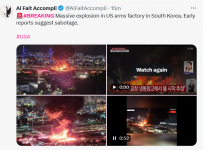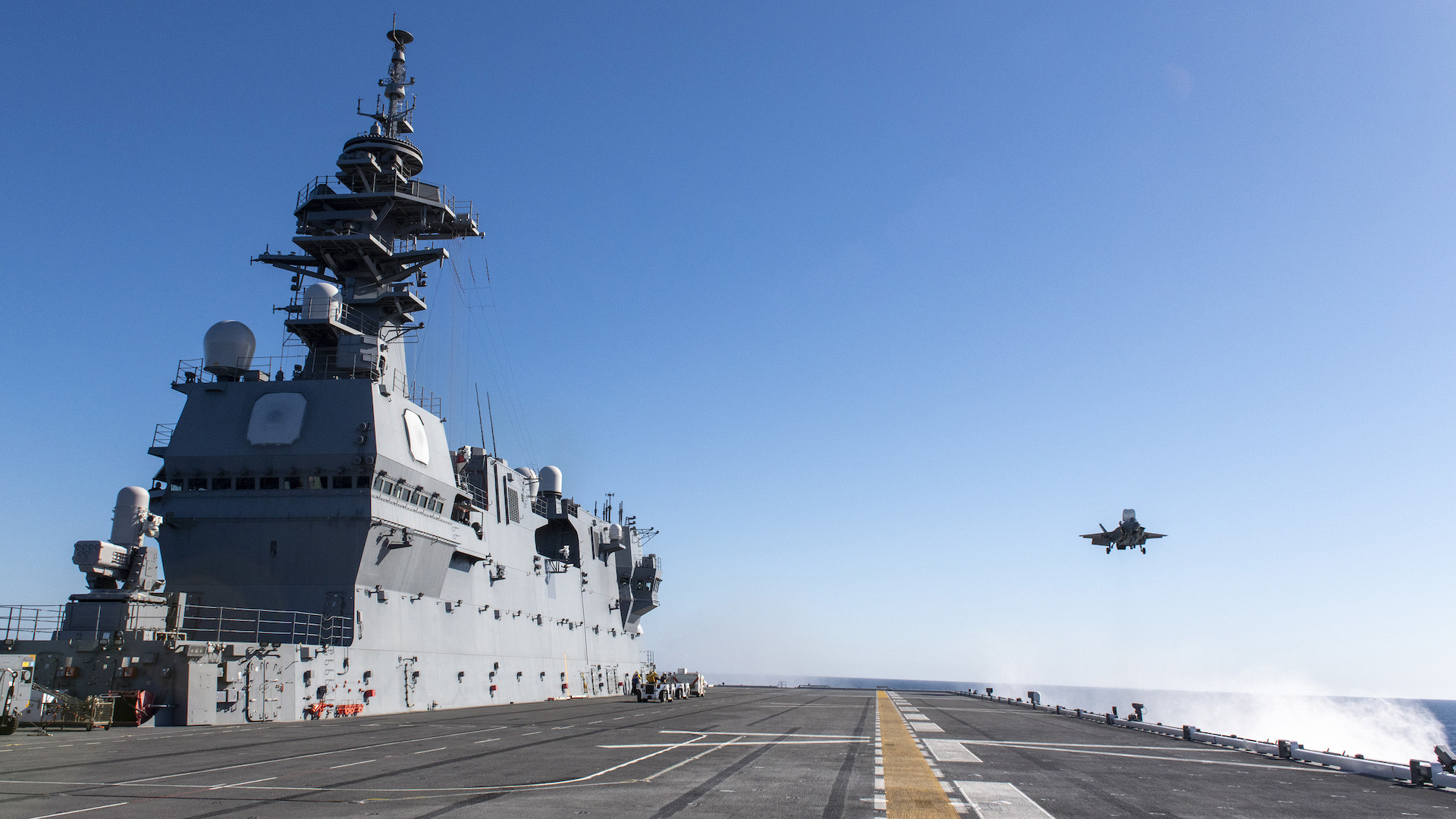Posted for fair use......(for all images please see article source. HC)
Advanced surface-to-air missiles may be the first major Russian arms headed to North Korea in return for its support in the war in Ukraine. Advanced surface-to-air missiles may be the first major Russian arms headed to North Korea in return for its support in the war in Ukraine.

www.twz.com
North Korea Getting New Air Defenses In Return For Supporting Russia In Ukraine: Official
Advanced surface-to-air missiles may be the first major Russian arms headed to North Korea in return for its support in the war in Ukraine.
Thomas Newdick
Posted 3 Hours Ago
27 Comments
North Korea has received Russian air defense systems in return for its support of the Kremlin’s war in Ukraine, South Korean officials have declared. The transfer of these weapons is the latest development in the
deepening military relationship between Pyongyang and Moscow, which has also seen more than
10,000 North Korean troops sent to Russia in recent weeks to fight against Ukraine.
According to Shin Wonsik, the top security adviser for South Korean President Yoon Suk Yeol, Russia has provided surface-to-air missiles and other unspecified air defense equipment. This will be used to reinforce the air defense of the North Korean capital, Pyongyang, Shin
told a South Korean
SBS TV program today.
While the specific type of air defense systems wasn’t disclosed, Lee Illwoo, an expert with the Korea Defense Network in South Korea said that the
S-400 surface-to-air missile system was most likely. This systems, which combine long-range surface-to-air missiles, launchers, ground-based radar systems, and other components, are among the most advanced available anywhere. As well as being widely used by Russia, including in the war with Ukraine, they have been exported to Algeria,
Belarus, China, India, and
Turkey.
View: https://youtu.be/qMO0F19Gmpk
The S-400 has a maximum range of up to 250 miles and can tackle lower-end ballistic missile targets, as well as aircraft and cruise missiles. You can read more about the system and its capabilities
here.
A diagram showing various typical components used within an S-400 battalion.
RIA NOVOSTI
Overall, the S-400 would make sense for North Korea, especially in a strategic role for the protection of Pyongyang since the country otherwise lacks modern air defense systems in this class. The protection of the capital primarily relies upon mainly outdated surface-to-air missiles and anti-aircraft artillery. Meanwhile, North Korea is increasingly active in building its own types of air defense systems.
While North Korea claimed to have operationally fielded the domestically produced
KN-06, also known as the Pongae-5, long-range surface-to-air missile system as long ago as 2017, the current status of this is unclear. Even if it has been more widely deployed, it is likely less capable than the S-400. The KN-06 is understood to be based on the
Chinese HQ-9 system, which itself is derived from the Russian
S-300 — an air defense system that is a generation behind the S-400.
Potentially,
other air defense equipment may have been provided by Russia, too. According to Kim Dae Young, a military expert at the Korea Research Institute for National Strategy, counter-drone equipment may also be of particular interest to North Korea,
which faces a growing threat from
South Korean and U.S. uncrewed aerial vehicles. At the same time, long-range S-300s or even
Pantsir series short-range air defense systems would be useful for North Korea.
The threat posed by drones to Pyongyang in particular was recently highlighted when North Korea accused South Korea of using drones to
scatter propaganda leaflets over its capital. Videos released by the North Korean authorities showed two different types of UAVs. That incident, which you can read about here, came after waves of
excrement and trash-filled balloons launched by North Korea into the South, a campaign of disruption that started this summer, accompanying a period of worsening tensions on the peninsula overall.
South Korea refused to confirm whether or not it was behind the alleged drone flights.
As
TWZ highlighted at the time, “The ability of drones — sophisticated or otherwise — to penetrate the heavily defended airspace over the North Korean capital will surely be a considerable worry to officials there and would appear to highlight deficiencies in the North’s best air defense coverage.”
Very likely, any military campaign launched by South Korea against the North would see extensive use of drones, including to confuse and overwhelm air defenses. This is especially relevant in the case of Pyongyang, which would be on the receiving end of decapitation strikes against the leadership.
Whatever the types of air defense systems that have apparently now been supplied, they will be a significant boost to the North Korean military — officially, the Korean People’s Army.
At the same time, it’s clear that Russia is in dire need of air defense systems, with the war in Ukraine putting significant stress on its existing surface-to-air missile stocks. Currently, there is a huge demand for such systems to protect the homeland as well as to defend airspace over the front lines. Presumably, it’s been determined that giving up some S-400s — or whatever other systems — is worth it for what they are getting in exchange from North Korea.
The arrival of new military hardware from Russia was long expected, by way of thanks for North Korea’s increasing support for the Kremlin’s full-scale invasion of Ukraine as well as the
counteroffensive in Russia’s Kursk region.
Pyongyang’s support for the war has seen the supply of a diverse range of weapons, including millions of badly needed artillery rounds and various kinds of other ammunition.
A recent assessment from the South Korean National Intelligence Service (NIS), based on intelligence provided by the Ukrainian Defense Intelligence Directorate (GUR), listed North Korean weapons collected from the battlefield, including claimed “122mm and 152mm shells,
Bulsae-4 anti-tank missiles, short-range ballistic missiles such as the
KN-23, and RPG anti-tank rockets.”
“Considering the size of containers loaded on cargo ships traveling between North Korea and Russia, it appears that a total of more than eight million 122mm and 152mm shells have been provided to Russia so far,” NIS concluded.
While all this equipment is in great demand from the Russian side, the deployment of North Korean troops in support of the offensive in Ukraine is an even more significant symbol of the growing military cooperation between Pyongyang and Moscow.
Last month, Lt. Gen. Kyrylo Budanov, the head of the Ukrainian Defense Intelligence Directorate (GUR) told
TWZ that there were nearly 12,000
North Korean infantry troops training in eastern Russia to fight Ukraine. Since then, there have been accounts of North Korean soldiers taking part in combat, including unconfirmed videos purporting to show fatalities. Earlier this week,
The Wall Street Journal reported that a senior North Korean general had been wounded by a Ukrainian strike in the Kursk region.
Ever since North Korea stepped in to assist Russia, there has been a good deal of speculation as to what it might get in return.
As well as financial reward, including
economic cooperation and energy shipments, it was long suspected that North Korea would likely benefit from Russian advanced weapons and technological expertise. There are
reports out of South Korea that Russia may have already been helping North Korea develop a space-based surveillance system, as part of a quid-pro-quo arrangement. Surveillance satellites are one area in which North Korea has had
some notable failures, while Russia has much more relevant experience.
There have been suggestions that Pyongyang might receive
new Russian combat aircraft to overhaul its
badly aging air force. The delivery of air defense systems could even be an indicator that fighters might be next for North Korea. Even if such a transfer were to involve older, surplus
MiG-29 Fulcrums, these would likely be welcomed by Pyongyang.
There have also been concerns that Moscow might provide North Korea with technologies to help accelerate its
nuclear and
long-range ballistic missile programs. Russia would also be a prime candidate to assist North Korea in pushing forward its submarine program, which also includes a growing family of
submarine-launched ballistic missiles (SLBMs) as well as increasingly
advanced submarine technologies.
While these remain possibilities, it appears that the first tangible benefits headed to the Korean People’s Army will be high-end air defense systems. With North Korean troops only starting to appear on the battlefield in support of Russia, it’s highly likely that Pyongyang’s assistance will continue, and even be stepped up, which will likely lead to more Russian arms heading to North Korea.
Contact the author: thomas@thewarzone.com
















